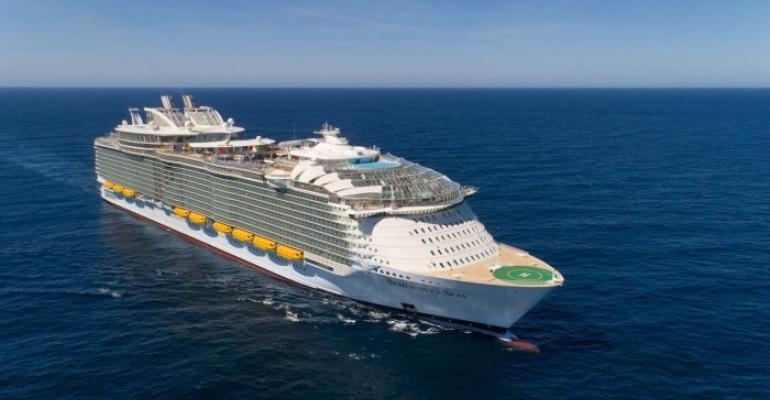The new world's largest cruise ship has just 85 MW of generating capacity, down from 100 MW on Allure of the Seas, and not all of that will ever be needed, Fain said aboard Symphony of the Seas off the coast of Spain on Friday.
This means less fuel burned and, therefore, reduced greenhouse gas emissions.
How can such big strides in efficiency be made?
No silver bullet
'Most people look for a silver bullet,' Fain said. 'There is no silver bullet. It is a thousand little things.'
For example, Symphony's hull was optimized to reduce drag, and the ship has an air lubrication system (bubble technology).
'It literally floats on air,' as Fain put it.
No incandescent lights are used, only LED or flourescent. Incandescent bulbs produce a lot of heat, so the air conditioning system has to work harder.
And the air conditioning systems on Symphony are more localized, so energy isn't wasted blowing the cold air around the ship from a central location.
Another advance is a waste heat steam generator that captures heat from exhaust gases in the smokestacks to heat water for uses on board.
Concerning overall energy efficiency, Fain maintained Royal Caribbean is at the top in cruising, with its ships emitting 10% to 15% fewer greenhouse gases than other major competitors.
Copyright © 2024. All rights reserved. Seatrade, a trading name of Informa Markets (UK) Limited. Add Seatrade Cruise News to your Google News feed.


